The Israel anti-drone market is expected to witness significant growth during the projection period due to proliferation of drones among malicious entities that have compelled governments and private sector organizations to make substantial investments in counter-drone technologies. Moreover, exponential advancement in electronic systems has significantly contributed to the increased need for anti-drone technology. These advanced systems, such as radar and RF jammers, have undergone substantial enhancements, rendering them highly advanced and efficient. Consequently, they have emerged as an appealing option for anti-drone applications.
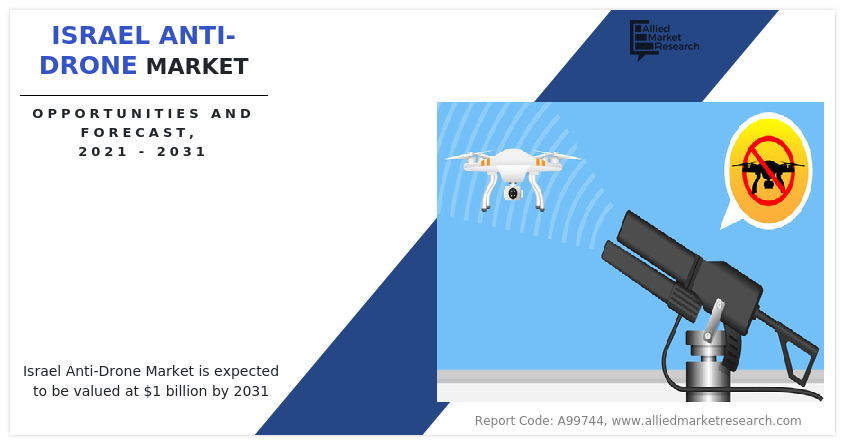
On the contrary, the Israel anti-drone market faces several challenges. One of the major restraints lies within the regulatory framework. The intricate and constantly evolving legal landscape surrounding drone technology presents a substantial challenge. Achieving an optimal equilibrium between safeguarding airspace and facilitating lawful drone utilization is a multifaceted undertaking. Imposing stringent regulations impedes commercial drone activities, whereas lax ones compromise security. Furthermore, cost and affordability of anti-drone technology pose as a constraining factor for its adoption. Cutting-edge solutions often carry a substantial price, which dissuades smaller entities from allocating resources towards these systems. Consequently, the market faces the problem of enhancing the accessibility of these technologies while upholding their efficacy.
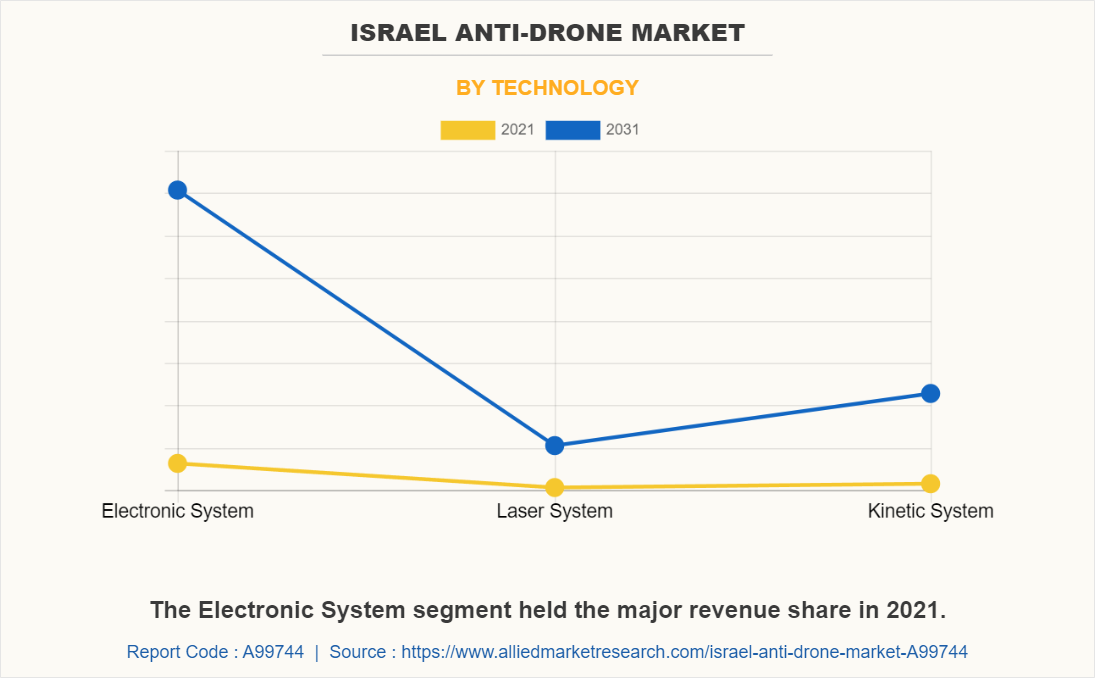
However, the Israel anti-drone market, with its many facets, offers a lot of opportunities. Among the most significant is rise in need for drone detection systems. The surge in unlawful drone solutions has resulted in a substantial market for the real-time detection and tracking of drones. Advanced detection technologies, such as radar and acoustic sensors, are gaining considerable momentum. In addition, avenue that offers opportunity is disruption of unauthorized drones. With the continuous evolution of the threat landscape, there is an increasing demand for non-kinetic anti-drone solutions. Laser systems, electronic countermeasures, and spoofing technologies are emerging as viable choices for disabling or redirecting unwanted drones.
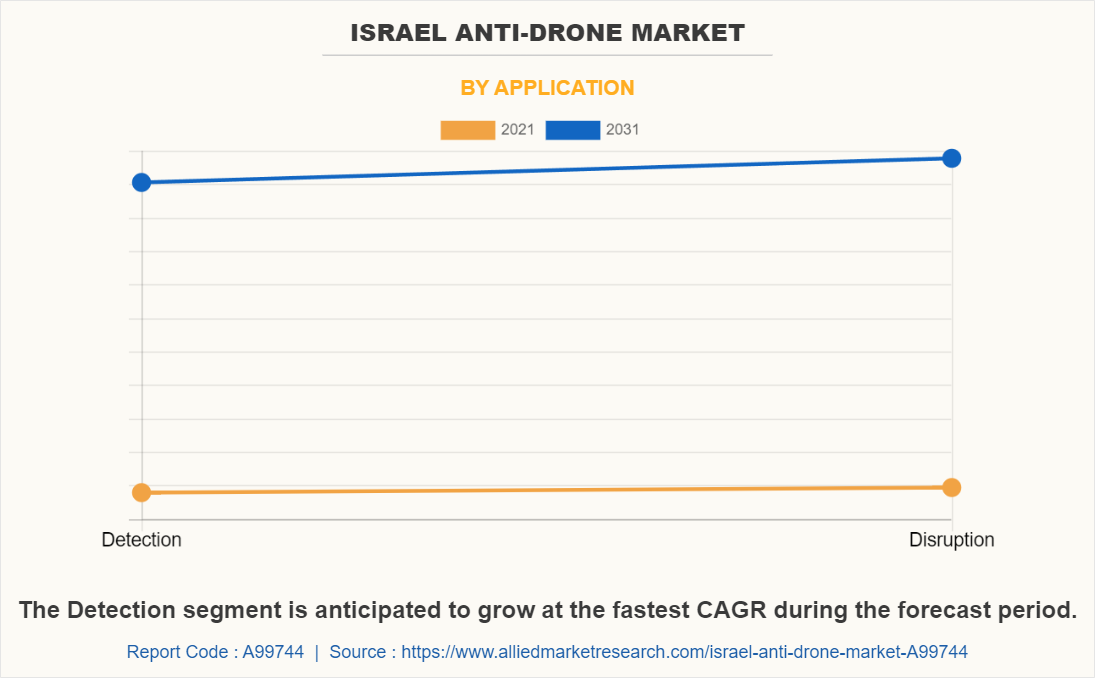
The Israel anti-drone market is segmented into technology, application, end use, and platform. Further, on the basis of technology, the Israel anti-drone market is segregated into electronic system, laser system, and kinetic system. Depending on application, it is bifurcated into detection and disruption. According to end use, the market is fragmented into government, military & defense, and commercial. By platform, it is classified into ground, handheld, and UAV based. The selection of a platform is a crucial factor.
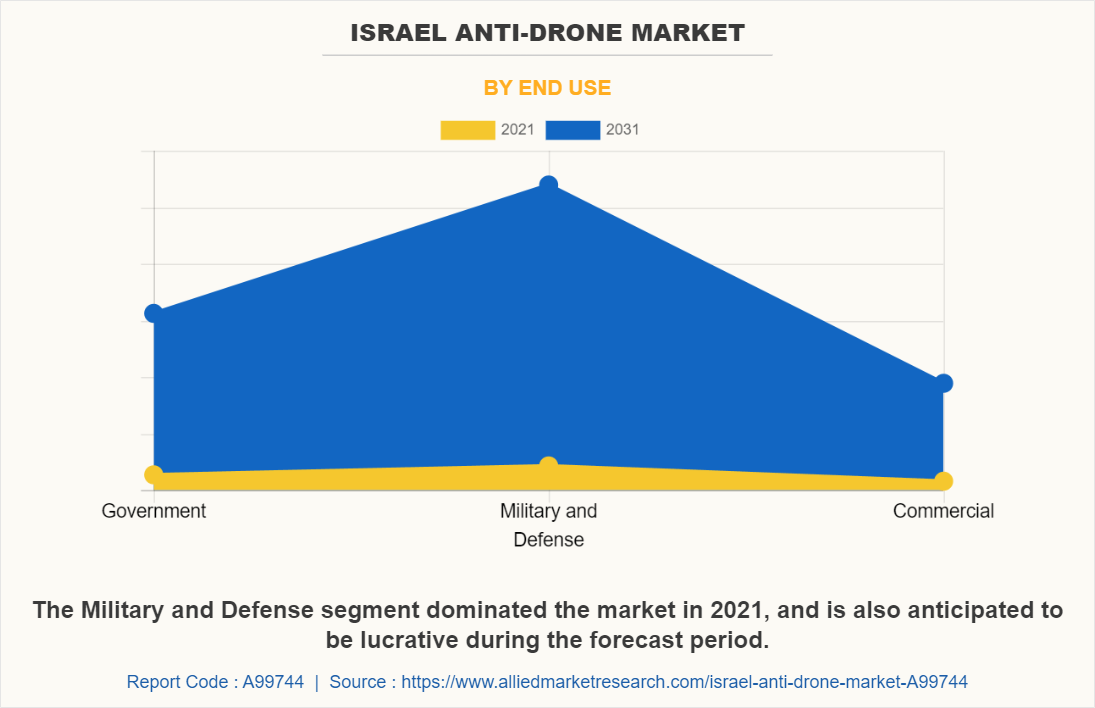
Key players active in the Israel anti-drone market are Rafael Advanced Defense Systems, Elbit Systems, IAI (Israel Aerospace Industries), HENSOLDT, RADA Electronic Industries, Aeronautics Ltd., BlueBird Aero Systems, D-Fend Solutions, UVision Air Ltd., and Regulus Cyber. These players are adopting several strategies to remain competitive in the market. The market is distinguished by a persistent drive towards innovation as companies endeavor to create anti-drone solutions that are more efficient and adaptable. The factor behind these advancements is the investment of market players in R&D activities.
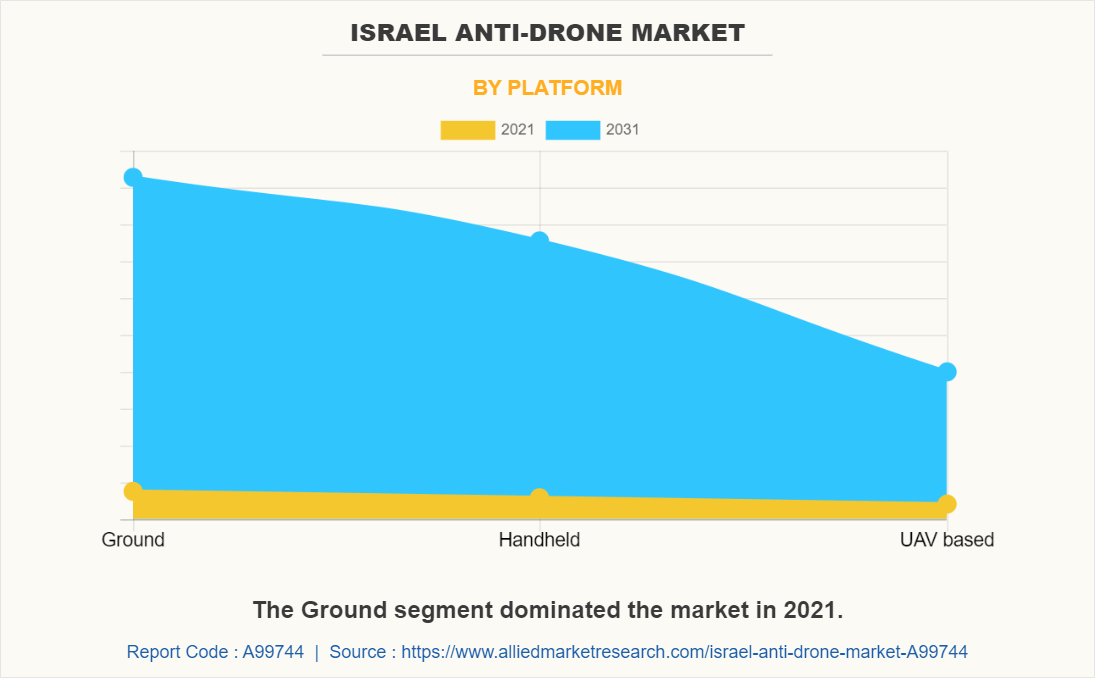
Moreover, Consumer perceptions have a significant impact on shaping the market. As the general public becomes increasingly aware of the potential risks associated with drones, there is rise in demand for anti-drone solutions. Companies are actively introducing systems that provide strong security measures along with their values and expectations concerning customer’s privacy & safety. Furthermore, market participants take into account the financial limitations of their intended clientele while simultaneously ensuring that their merchandise adheres to the requisite security protocols.
The Porter’s five forces analysis analyzes the competitive scenario of the Israel anti-drone market and role of each stakeholder. These forces include the bargaining power of buyers, bargaining power of suppliers, threat of new entrants, threat of substitutes, and competitive rivalry. The threat of new entrants is high owing to substantial financial investment necessary for research, development, and adherence to regulatory standards. Established participants with well-established technology and client connections possess a considerable edge.
The bargaining power of suppliers is low as providers of essential components and technology possess a strong forefront in the market. Enterprises are dependent on specialized components, thereby restricting their ability to bargain. The bargaining power of buyers is significant due to high demand for tailored solutions. This capability has the potential to impact the pricing and customization of anti-drone systems.
The market is characterized by a relatively low threat of substitutes. The distinctive feature of anti-drone technology lies in its unparalleled capacity to offer efficient security against drone-related risks. Nevertheless, the market is expected to be influenced by emergence of novel challenges resulting from advancements in drone technology. The competitive rivalry within the market fierce due to perpetual innovation and ever-changing nature of the threat landscape. Both established companies and emerging players strive to offer the most cutting-edge and all-encompassing solutions.
The SWOT analysis of the Israel anti-drone market emphasis on both internal and external factors affecting the market. The market possess strengths of strong technological expertise in electronic, laser, and kinetic systems and continuous R&D infrastructure is robust, enabling market players to foster innovation. Furthermore, it has weaknesses that include intricate and ever-changing regulatory landscape and reliance on specialized vendors for essential components.
On the other hand, there are several opportunities in the market, including incorporation of artificial intelligence and machine learning techniques has contributed to improved precision in this field. Moreover, there is a focus on providing customized and tailored solutions that cater to the specific requirements of end-users. However, it is important to acknowledge the potential threats associated with this industry, including rapid advancements in drone technology pose a challenge as new capabilities are constantly getting developed. In addition, increase in complexity of drone threats requires continuous innovation in detection and disruption methods. Furthermore, competition in this market is fierce, with both established and emerging players vying for market share.
Key Benefits For Stakeholders
- Enable informed decision-making process and offer market analysis based on the current market situation and estimated future trends.
- Analyze the key strategies adopted by major market players in Israel anti-drone market.
- Assess and rank the top factors that are expected to affect the growth of Israel anti-drone market.
- Top Player positioning provides a clear understanding of the present position of market players.
- Detailed analysis of the Israel anti-drone market segmentation assists to determine the prevailing market opportunities.
- Identify key investment pockets for various offerings in the market.
Israel Anti-Drone Market Report Highlights
| Aspects | Details |
| Forecast period | 2021 - 2031 |
| Report Pages | 83 |
| By Technology |
|
| By Application |
|
| By End Use |
|
| By Platform |
|
| Key Market Players | IAI, ELTA Systems, CyberIX, UAV Defence, ExhalAim, Predina, mPrest, DroneShield, Rafael, Intelligent Eye Solutions |
The Israel Anti-Drone Market is estimated to reach $1 billion by 2031
ELTA Systems, IAI, Rafael, mPrest, ExhalAim, Predina, DroneShield, CyberIX, UAV Defence, Intelligent Eye Solutions are the leading players in Israel Anti-Drone Market
1. Enable informed decision-making process and offer market analysis based on current market situation and estimated future trends.
2. Analyze the key strategies adopted by major market players in israel anti-drone market.
3. Assess and rank the top factors that are expected to affect the growth of israel anti-drone market.
4. Top Player positioning provides a clear understanding of the present position of market players.
5. Detailed analysis of the israel anti-drone market segmentation assists to determine the prevailing market opportunities.
6. Identify key investment pockets for various offerings in the market.
Israel Anti-Drone Market is classified as by technology, by application, by end use, by platform
Loading Table Of Content...
Loading Research Methodology...



